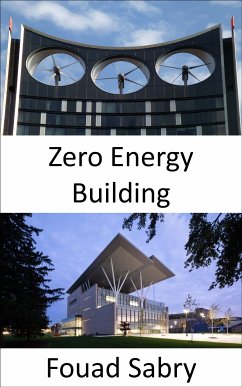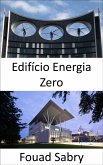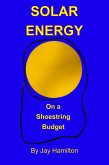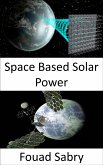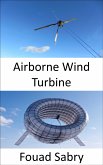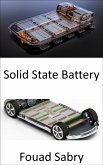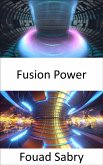What Is Zero Energy Building
A Zero Energy Building (ZEB), also known as a Net Zero Energy (NZE) building or a Zero Net Energy (ZNE) building, is a building with net zero energy consumption. This means that the total amount of energy used by the building on an annual basis is equal to the amount of renewable energy created on the site or in other definitions by renewable energy sources offsite, using technology such as heat pumps, high efficiency windows and insulation, and solar panels. Other names for this type of building include a Zero Net Energy During their lifetimes, these structures should be able to release into the atmosphere an amount of greenhouse gases that is lower, on average, than that of comparable non-ZNE structures. There are times when they emit greenhouse gases and utilize nonrenewable sources of energy, but there are also times when they decrease the use of energy and the generation of greenhouse gases in other places by the same amount. The pursuit of zero-energy buildings is motivated not only by a desire to have a less negative influence on the surrounding environment, but also by a desire to save money. The financial viability of zero-energy buildings is ensured by the availability of tax benefits and savings on energy expenditures. The virtually Zero Energy Building (nZEB) initiative is a similar idea that has been accepted and executed by the European Union and other cooperating nations. The objective of the initiative is to have all newly constructed buildings in the area comply with the nZEB criteria by the year 2020.
How You Will Benefit
(I) Insights, and validations about the following topics:
Chapter 1: Zero-energy building
Chapter 2: Renewable energy
Chapter 3: Solar energy
Chapter 4: BedZED
Chapter 5: Solar water heating
Chapter 6: Environmental impact of electricity generation
Chapter 7: Sustainable energy
Chapter 8: Low-energy house
Chapter 9: Energy-plus building
Chapter 10: Passive house
Chapter 11: Sustainable architecture
Chapter 12: Microgeneration
Chapter 13: Renewable heat
Chapter 14: Energy efficiency in British housing
Chapter 15: Solar air conditioning
Chapter 16: Solar power
Chapter 17: BrightBuilt Barn
Chapter 18: Green retrofit
Chapter 19: Creative Energy Homes
Chapter 20: Zero carbon housing
Chapter 21: Zero heating building
(II) Answering the public top questions about zero energy building.
(III) Real world examples for the usage of zero energy building in many fields.
(IV) 17 appendices to explain, briefly, 266 emerging technologies in each industry to have 360-degree full understanding of zero energy building' technologies.
Who This Book Is For
Professionals, undergraduate and graduate students, enthusiasts, hobbyists, and those who want to go beyond basic knowledge or information for any kind of zero energy building.
A Zero Energy Building (ZEB), also known as a Net Zero Energy (NZE) building or a Zero Net Energy (ZNE) building, is a building with net zero energy consumption. This means that the total amount of energy used by the building on an annual basis is equal to the amount of renewable energy created on the site or in other definitions by renewable energy sources offsite, using technology such as heat pumps, high efficiency windows and insulation, and solar panels. Other names for this type of building include a Zero Net Energy During their lifetimes, these structures should be able to release into the atmosphere an amount of greenhouse gases that is lower, on average, than that of comparable non-ZNE structures. There are times when they emit greenhouse gases and utilize nonrenewable sources of energy, but there are also times when they decrease the use of energy and the generation of greenhouse gases in other places by the same amount. The pursuit of zero-energy buildings is motivated not only by a desire to have a less negative influence on the surrounding environment, but also by a desire to save money. The financial viability of zero-energy buildings is ensured by the availability of tax benefits and savings on energy expenditures. The virtually Zero Energy Building (nZEB) initiative is a similar idea that has been accepted and executed by the European Union and other cooperating nations. The objective of the initiative is to have all newly constructed buildings in the area comply with the nZEB criteria by the year 2020.
How You Will Benefit
(I) Insights, and validations about the following topics:
Chapter 1: Zero-energy building
Chapter 2: Renewable energy
Chapter 3: Solar energy
Chapter 4: BedZED
Chapter 5: Solar water heating
Chapter 6: Environmental impact of electricity generation
Chapter 7: Sustainable energy
Chapter 8: Low-energy house
Chapter 9: Energy-plus building
Chapter 10: Passive house
Chapter 11: Sustainable architecture
Chapter 12: Microgeneration
Chapter 13: Renewable heat
Chapter 14: Energy efficiency in British housing
Chapter 15: Solar air conditioning
Chapter 16: Solar power
Chapter 17: BrightBuilt Barn
Chapter 18: Green retrofit
Chapter 19: Creative Energy Homes
Chapter 20: Zero carbon housing
Chapter 21: Zero heating building
(II) Answering the public top questions about zero energy building.
(III) Real world examples for the usage of zero energy building in many fields.
(IV) 17 appendices to explain, briefly, 266 emerging technologies in each industry to have 360-degree full understanding of zero energy building' technologies.
Who This Book Is For
Professionals, undergraduate and graduate students, enthusiasts, hobbyists, and those who want to go beyond basic knowledge or information for any kind of zero energy building.
